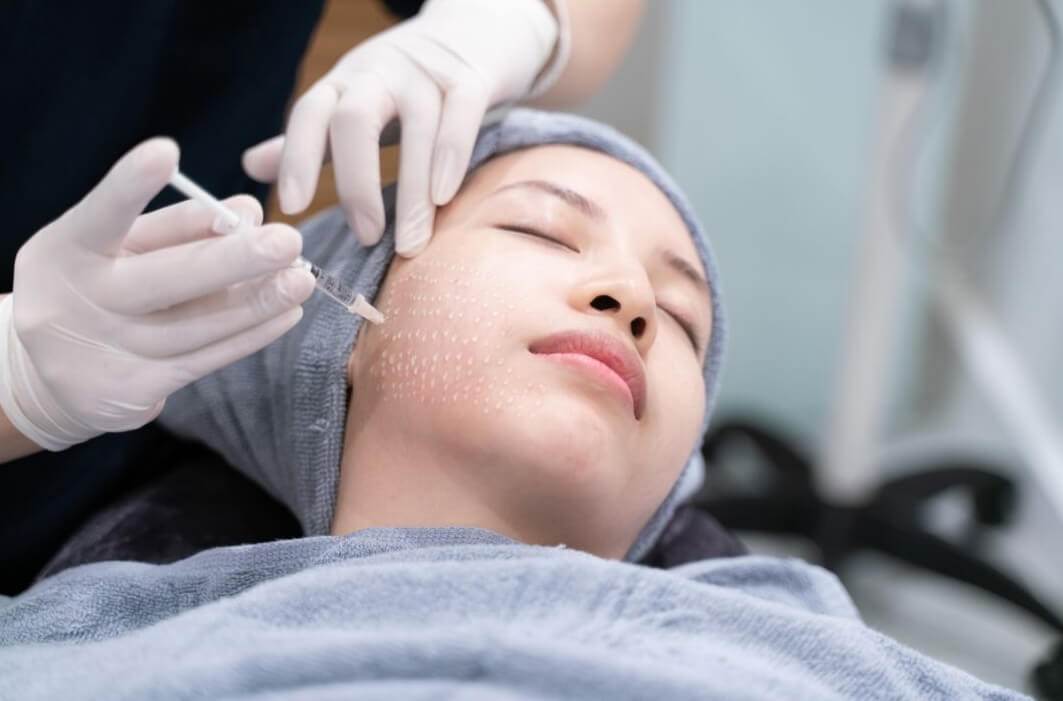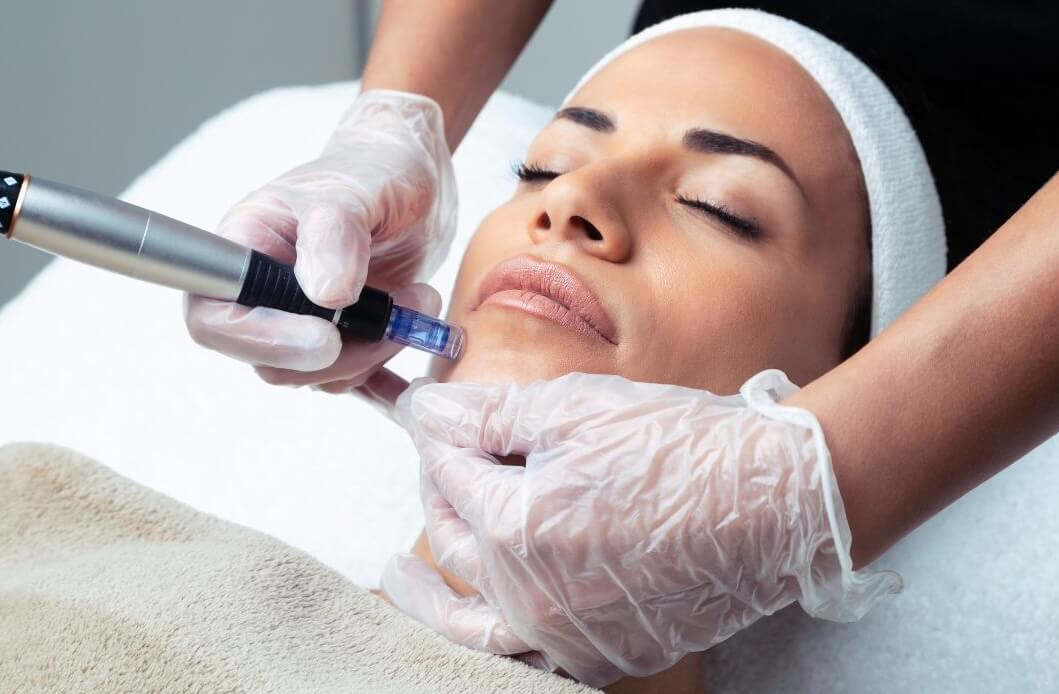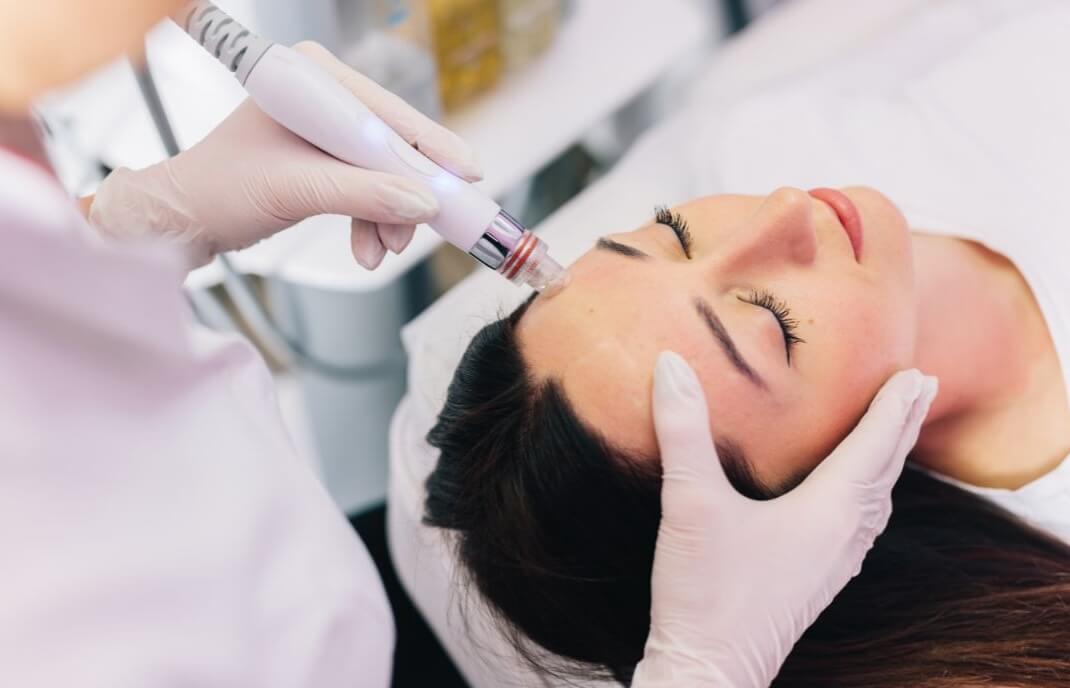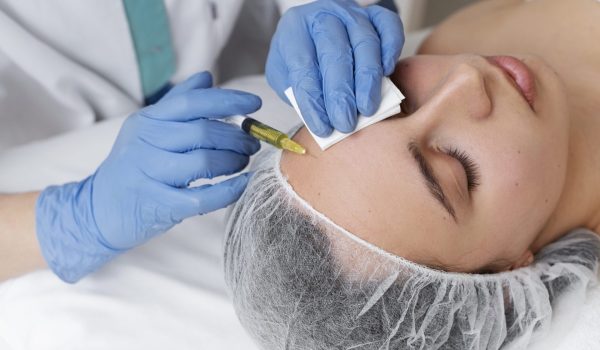Mesotherapy vs Microneedling: A Side Effect Guide
-
By: Adam Diwan
-
June 25, 2024
Skincare treatments, mesotherapy and microneedling have been found as popular options for those seeking to improve their skin’s appearance.
Understanding the side effects, risks, and various aspects of these treatments is needed before making a choice.
This article aims to provide a comparison of mesotherapy vs microneedling, helping you make an informed decision about which treatment might be right for you.
We will cover the side effects, risks, recovery time, suitability for different skin types, techniques, and pain levels.
What is Mesotherapy?

This is a minimally invasive cosmetic procedure that originated in France.
You can learn everything about mesotherapy via this article.
This involves injecting a combination of vitamins, enzymes, hormones, and plant extracts into the skin to rejuvenate and tighten it.
Mesotherapy is commonly used for reducing wrinkles and fine lines, lightening pigmented skin, and improving overall skin quality.
The procedure involves multiple micro-injections using a fine needle.
In recent years, mesotherapy products have gained popularity due to their ability to deliver targeted treatment with minimal downtime.
What is Microneedling?

Microneedling, also known as collagen induction therapy, is another popular skincare treatment.
It involves the use of fine needles to create hundreds of tiny, invisible puncture wounds in the top layer of the skin.
These micro-injuries trigger the body’s natural wound-healing processes, resulting in increased collagen and elastin production.
Microneedling is commonly used to treat scars, wrinkles, and large pores.
This procedure has been praised for its effectiveness and minimal recovery time, making it a trendy choice among skincare enthusiasts.
Side Effects
You will find that mesotherapy side effects and microneedling side effects are similar but also some differences between them – more often than not, they tend to be mild and temporary.
Common side effects of mesotherapy include bruising, swelling, redness, and sensitivity at the injection sites. Some patients may experience mild pain or itching as well.
Common microneedling side effects are similar and include redness, swelling, and minor skin irritation. The skin may also feel tight and sensitive immediately after the procedure.
When comparing side effects, both treatments present similar risks, but individual experiences may vary based on skin type and sensitivity.
Factors influencing side effects include the skill of the practitioner, the substances used in mesotherapy, and the depth of needle penetration in microneedling.
Risks
Mesotherapy risks include infection, allergic reactions to injected substances, and skin discolouration.
It’s essential to choose a qualified professional to minimise these risks.
Long-term mesotherpay and microneedling risks are rare but can include scarring and persistent skin sensitivity.
Microneedling also carries risks, such as infection, especially if not performed in a sterile environment.
There’s also a risk of hyperpigmentation or scarring, particularly in individuals with darker skin tones or those prone to keloid scars.
Proper aftercare and following the practitioner’s instructions can significantly mitigate these risks.
Recovery Time
The recovery time for mesotherapy typically ranges from a few hours to a couple of days, depending on the extent of the treatment and the individual’s skin response.
Minor swelling and redness may persist, but most people can return to their regular activities shortly after the procedure.
Microneedling generally has a short recovery period, with most individuals experiencing redness and mild swelling for about 24 to 48 hours.
The skin may feel slightly sensitive or tight, but these symptoms usually subside quickly.
Factors affecting recovery time include the depth of needle penetration and the individual’s skin type.
To allow for faster recovery, it is advisable to follow all post-treatment instructions, avoid sun exposure, and keep the treated area clean and moisturised.
Suitability for Different Skin Types
Mesotherapy is suitable for various skin types and can be customised to address specific skin concerns.
It is particularly beneficial for ageing skin, dull complexion, and areas requiring hydration or pigmentation correction.
However, those with very sensitive or reactive skin should proceed with caution and consult a professional beforehand.
Microneedling is also versatile and can be used on different skin types, including sensitive and acne-prone skin.
It is effective for improving skin texture and tone.
Special considerations should be given to those with active acne, eczema, or other inflammatory skin conditions, as microneedling may exacerbate these issues.
Professional advice is needed when determining the appropriate treatment for your skin type and condition.
Technique
Mesotherapy involves the use of a fine needle to inject a customised cocktail of nutrients into the middle layer of the skin.
This technique allows for targeted treatment of specific areas and concerns. The procedure requires professional expertise to make sure there is proper administration and minimise risks.
Microneedling, on the other hand, uses a device equipped with tiny needles to create controlled micro-injuries on the skin’s surface.
This stimulates collagen production and improves skin regeneration. While at-home microneedling kits are available, professional treatments offer more precision and safety.
Both techniques require a skilled practitioner to achieve the best results and reduce the risk of complications.
Pain Level
Pain levels during mesotherapy can vary depending on individual tolerance and the specific substances used.
Some people report feeling a slight pinching or stinging sensation during the injections, which can be managed with topical anaesthetics.
Microneedling typically causes mild discomfort, described as a tingling or prickling sensation.
The intensity can vary based on the needle length and the individual’s pain threshold.
Topical anaesthetics are also used to minimise discomfort during the procedure.
Personal experiences with pain can differ, and it is helpful to read testimonials or speak with others who have undergone these treatments.
In summary, both mesotherapy and microneedling offer unique benefits for skin rejuvenation, with specific differences in techniques, side effects, and recovery times.
Choosing the right treatment depends on individual skin concerns, pain tolerance, and desired outcomes.
Consulting with a skin care professional can provide personalised advice and allow for safe and effective treatment.
By understanding the key differences between these treatments, you can make an informed decision that best suits your skincare needs. For more information please contact us at Revolve Medicare.
Related Posts
-
By: Adam Diwan
-
September 23, 2024
How to Start an Aesthetics Business
-
By: Adam Diwan
-
September 23, 2024
Top 5 Fat-Dissolving Products to Use in Your Clinic
-
By: Adam Diwan
-
July 23, 2024
Top 10 Vitamin Injections for Health and Beauty
-
By: Adam Diwan
-
July 2, 2024
How to Switch from Saxenda to Mounjaro
-
By: Adam Diwan
-
June 18, 2024
How to Assist Your Client in Creating a Summer Skincare Routine
-
By: Adam Diwan
-
June 11, 2024











